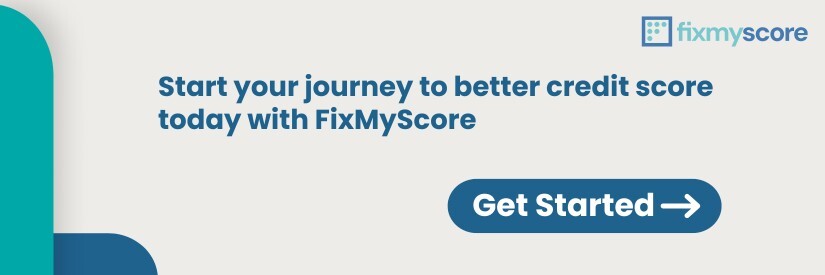If you’ve ever been denied a loan or credit card due to no credit history, you’re not alone. Maybe you’ve just started earning, or perhaps you’ve simply never used credit before. The good news? Building your credit from the ground up is entirely achievable—and easier than you think. Here’s a practical, step-by-step guide to get started.
Why is Credit History So Important? Demystifying No Credit History
Think of your credit history as your financial reputation. It’s what lenders (and even some employers or landlords) use to assess how reliable you are with money. A good credit profile can help you:
- Get loan approvals faster
- Secure lower interest rates
- Rent homes or apartments more easily
- Access better postpaid mobile and utility plans
- Receive quicker financial assistance in emergencies
If you’re starting with zero credit history, the key is to start small, be consistent, and demonstrate responsible borrowing behavior.
Step-by-Step Credit Building Plan for taking no credit history to a decent one
Step 1: Start with a Secured Credit Card
A secured credit card is one of the safest ways to begin building credit. Here’s how it works:
- You provide a fixed deposit (usually ₹5,000 to ₹20,000), which acts as collateral.
- The bank issues a credit card with a matching credit limit.
- Your transactions and repayments are reported to credit bureaus like CRIF.
Tip: Always pay your full dues on time and keep your usage below 30% of your credit limit to build a positive credit score.
Step 2: Use ‘Buy Now, Pay Later’ (BNPL) Services Wisely
BNPL options offered by online platforms and retailers are easier to qualify for than traditional loans. For example, paying for a ₹3,000–₹10,000 gadget in EMIs and making timely payments shows lenders that you can handle credit responsibly.
Tip: Avoid overcommitting. Treat BNPL as a short-term credit tool, not a spending spree.
Step 3: Consider a Credit Builder Loan
Offered by select banks and NBFCs, credit builder loans are designed specifically for those looking to establish credit. Here’s how they work:
- The loan amount is kept in a fixed deposit or savings account.
- You make regular EMI payments, which are reported to credit bureaus.
- Once the loan is repaid in full, the amount (plus interest) is released to you.
It’s a smart way to build credit without the temptation to spend the borrowed funds.
Step 4: Report Your Rent and Utility Payments
Traditionally, rent and utility payments haven’t counted towards your credit score in India—but that’s changing. Some platforms now allow you to report timely rent, electricity, and mobile bill payments to credit bureaus.
Tip: If you’re consistent with these payments, consider using a third-party service that reports them on your behalf to help build your credit profile.
Step 5: Regularly Monitor Your Credit Report
Once you begin building credit, staying on top of your credit report is crucial. You can check your report for free once a year from each bureau (like CRIF).
What to look for:
- Errors or inaccurate information
- Unfamiliar accounts or inquiries
- Your credit score trend
Note: A credit score of 700+ is considered good. But when you’re starting out, focus more on timely payments and responsible usage than the score itself.
Step 6: Practice Responsible Credit Habits
With access to credit comes the responsibility to use it wisely. Here are a few golden rules:
- Never miss a payment—set up auto-debits if needed
- Keep your credit utilization low (ideally under 30%)
- Don’t apply for multiple loans or credit cards in a short span
- Avoid borrowing more than you can repay
Responsible usage today lays the foundation for a strong credit profile tomorrow.
Also Read: 5 Fast Ways to Increase Credit History Length
Conclusion: Start Smart, Grow Steady
Building your credit is not an overnight task—but it’s one of the smartest financial moves you can make early in life, and help you overcome from no credit history in your CIBIL records. With a little planning, patience, and discipline, you can establish a credit history that opens doors to better financial opportunities in the future.
Start today—and let your credit journey be your stepping stone to financial confidence.





[…] Related Read | No Credit History Yet? Here’s Your Step-by-Step Plan to Build It from Scratch […]
[…] If you’re just starting and wondering how to improve credit score fast from scratch, getting a credit card is one of the best ways to build credit from scratch. […]
[…] The first steps for anyone starting out: No Credit History Yet? Here’s Your Step-by-Step Plan to Build It from Scratch. […]
Your article helped me a lot, is there any more related content? Thanks!
Your point of view caught my eye and was very interesting. Thanks. I have a question for you.
I don’t think the title of your article matches the content lol. Just kidding, mainly because I had some doubts after reading the article. https://www.binance.com/sl/register?ref=GQ1JXNRE
Your point of view caught my eye and was very interesting. Thanks. I have a question for you.
I don’t think the title of your article matches the content lol. Just kidding, mainly because I had some doubts after reading the article.
Thank you for your sharing. I am worried that I lack creative ideas. It is your article that makes me full of hope. Thank you. But, I have a question, can you help me?